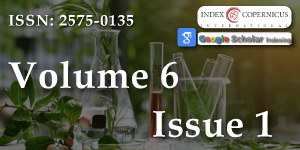Nematicides in Egypt
Main Article Content
Abstract
Plant-parasitic nematodes (PPNs) are famous aggressive pests that attack several crops worldwide. A lot of farmers are suffering from nematode diseases which cause critical crop losses. At the same time, the most of available solutions for this problem are depending on synthetic nematicides. These chemical nematicides not only cause environmental and health problems but also may cause resistance in nematodes. Despite the occurrence of resistance in nematodes under field conditions still less clear. Therefore, this note is about the registered nematicides in Egypt which may help those who are interested in nematicides. Also, the chemical group and mode of action of nematicides were mentioned according to the insecticide resistance action committee (IRAC) [1] and fungicide resistance action committee (FRAC).
Article Details
Copyright (c) 2022 Khalil MS.

This work is licensed under a Creative Commons Attribution 4.0 International License.
The Journal of Plant Science and Phytopathology is committed in making it easier for people to share and build upon the work of others while maintaining consistency with the rules of copyright. In order to use the Open Access paradigm to the maximum extent in true terms as free of charge online access along with usage right, we grant usage rights through the use of specific Creative Commons license.
License: Copyright © 2017 - 2025 |  Open Access by Journal of Plant Science and Phytopathology is licensed under a Creative Commons Attribution 4.0 International License. Based on a work at Heighten Science Publications Inc.
Open Access by Journal of Plant Science and Phytopathology is licensed under a Creative Commons Attribution 4.0 International License. Based on a work at Heighten Science Publications Inc.
With this license, the authors are allowed that after publishing with the journal, they can share their research by posting a free draft copy of their article to any repository or website.
Compliance 'CC BY' license helps in:
| Permission to read and download | ✓ |
| Permission to display in a repository | ✓ |
| Permission to translate | ✓ |
| Commercial uses of manuscript | ✓ |
'CC' stands for Creative Commons license. 'BY' symbolizes that users have provided attribution to the creator that the published manuscripts can be used or shared. This license allows for redistribution, commercial and non-commercial, as long as it is passed along unchanged and in whole, with credit to the author.
Please take in notification that Creative Commons user licenses are non-revocable. We recommend authors to check if their funding body requires a specific license.
Insecticide Resistance Action Committee | IRAC. irac-online.org
Fernández L. Nematicides market value globally 2025 | Statista. 2021.
Khalil MS, Selim RE. Fluorinated nematicides: Novel classes in the way. J Plant Sci Phytopathol. 2021; 5: 14-16. https://www.plantsciencejournal.com/fulltext/jpsp/jpsp-aid1055.php
Agricultural Pesticides Committee. apc.gov.eg
Nakubulwa S, Kusiima J, Kadobera D, Mutyoba JN, Ario AR, et al. Acute metam sodium poisoning caused by occupational exposure at a flower farm - Uganda, October 2016. MMWR Morb Mortal Wkly Rep. 2018; 67: 414 - 417.
Prider J, Williams A. Using dazomet to reduce broomrape seed banks in soils with low moisture content. Crop Prot. 2014; 59: 43-50.
Cox C. Metam Sodium. J Pesticide Reform. 2006; 26: 12-16.
Kim J, Lam W, Quistad G, Casida J. Sulfoxidation of the soil fumigants metam, methyl isothiocyanate, and dazomet. J Agri Food Chem. 1994; 42: 2019-2024.
Australian Pesticides and Veterinary Medicines Authority. 2020. https://apvma.gov.au/node/10901
Hazia DK. Recent advancement in pesticides formulations for user and environment friendly pest management. Int J Res Rev. 2015; 2: 35-40.
Bhattacharyya A, Barik SR, Ganguly P. New pesticide molecules, formulation technology and uses: present status and future challenges. The J Plant Pro Sci. 2009; 1: 9-15.

